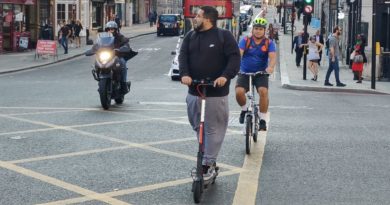Household study measures cycling and walking in Northern Ireland
A study of households in Northern Ireland has found cycling levels to be broadly in line with the rest of the UK, but with an interesting spike in youth cycling in some areas.
The Continuous Household Study asks for feedback on active travel options biennially and with today’s update delivers feedback from 2018/19.
Perhaps the highlight of the latest update is the discovery of an increase of cycle tow work rates from 0% in 2016/17 to 4% among 16 to 24-year-olds. The next highest demographic for cycle use is the 50 to 64 age bracket at 3%. 1% of those with a disability utilise a bike for transport.
In line with data from the Department for Transport’s rather disappointing assessment of England, the modal share for cycling among those travelling to work is just 2%, with males more likely to make a cycle journey at 4% and females 1%. The report suggests that there has been no change in the proportion of people cycling to work since 2014/15 when records began.
Respondents living in urban areas of Northern Ireland were more likely to walk (15%) and cycle (3%) to and/or from work than those living in rural areas (5% and 1%).
By council district, cycling to and from work ranged from 0% in Armagh, Banbridge, Craigavon, Newry, Mourne and Down, up to 6% in Mid and East Antrim.
The travel survey suggested that people in Northern Ireland make 900 journeys per year, on average. Around a third of these are believed to be under two miles in length and many shorter. It is these journeys that the survey says “could and should be made by walking, cycling and public transport, yet far too many of them are still made by private car.”
The Department for Infrastructure is said to be warming to the idea of creating safer conditions to encourage people to travel in a sustainable way where possible, though the report does not expand upon this.
Later in the report the connection is made between the provision of safe cycling infrastructure and increased modal share.
“The provision of traffic free cycling routes such as the Loughshore Newtownabbey cycle path to the north of Belfast and the Comber Greenway and the Bangor Coastal path may have contributed to higher rates of cycling in Mid & East Antrim and North Down & Ards,” writes the report.
Overall, 9,000 domestic addresses across Northern Ireland participated in the study.



